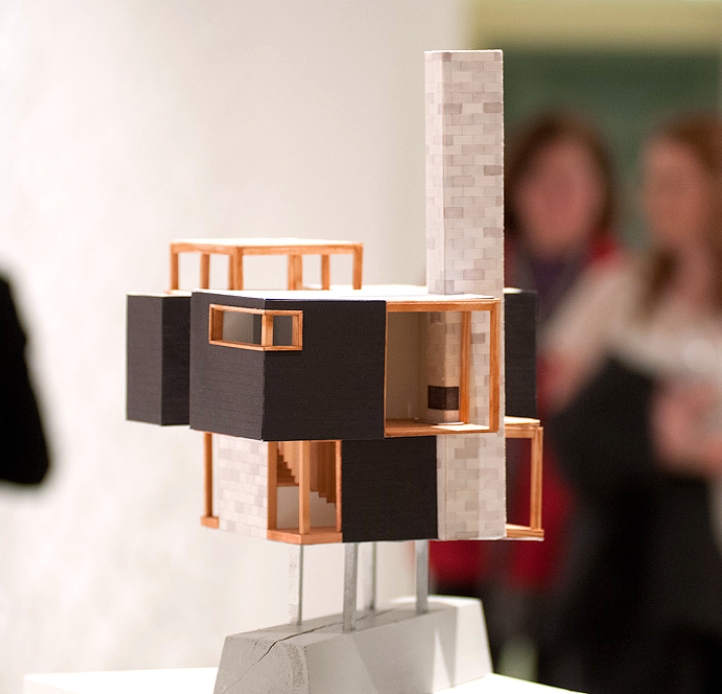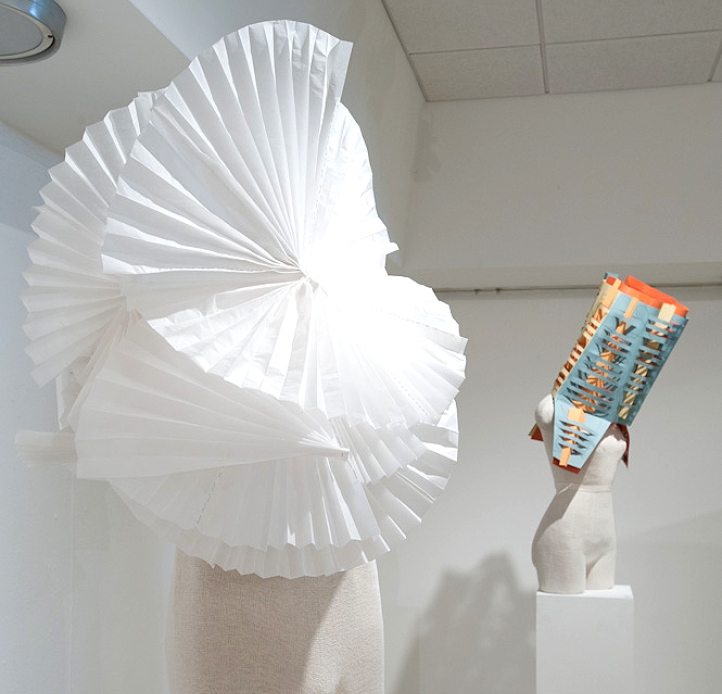
Interior design students gain a thorough knowledge of design processes as well as technical skills. Construction methods, lighting design, materials specification, and color- use support specializations within the major. Studios offer design exploration in spatial experimentation, residential design, retail design, public buildings, and office planning, culminating in an undergraduate thesis project.
Our Interior Design program offers students a specialized studio-oriented education that prepares them for careers as professional interior designers or for graduate studies.
Students gain a thorough knowledge of design processes and technical skills, including computer-aided design and traditional drafting and rendering. They leave with an understanding of various period styles of architecture and design, the principles of design, as well as standards for construction. Throughout the program students develop self-discipline, professional standards, and a good work ethic.




Acceptance to the major is determined after reviewing a portfolio of work during an interview with the faculty of the Interior Design Department; transcripts are evaluated on a case-by-case basis. Completing this course sequence takes a full four years and it should not be assumed that transfer students can graduate in two years of admission.
The Interior Design program at Buffalo State is accredited by the Council of Interior Design Accreditation, which determines the professional standards our program must meet to prepare our students for the profession. The curriculum is sequentially structured and courses must be taken in the order they are offered.
For transfer students who may have completed interior design coursework at a previous school and wish to have the interior design credits evaluated to count toward the degree, please send the course syllabi, course catalog description and a digital record of your work in these courses to the program faculty. We will then determine all possible course equivalencies and work out your individualized graduation roadmap.
The Skills Competency Exam is required of all students who wish to gain entrance to the Interior Design Department at Buffalo State. It measures a student's readiness to attempt the more rigorous project assignments found in upper level Interior Design studios. Communication through free-hand drawing, rendering, mechanical and perspective drawing, model-building; utilizing the language of design; and time-management must be adequately mastered to provide the student with the best opportunity for success in the major.
The 24-hour charrette experience offers a realistic setting for project development and production and gives students a first-hand understanding of the pressures found in the Interior Design workplace. It also promotes student ‘community’ within the program.
Anonymity: Upon arrival for the exam, students select a number. Only this number will identify the student's work and offers the most objective method of evaluation.
Transfer Students: Must schedule an interview with the Interior Design Department chair during the spring semester to assess student's eligibility to sit for the exam. An Exam Materials List will be provided during the interview.
During the last week of the spring semester
Contact Interior Design Department at (716) 878-5252 (for specific dates)
Begins: Friday at 9:00 a.m.
Ends: Saturday at 9:00 a.m.
Upton Hall 205 – site for all exam activities
Upton Hall 213 – designated for resting
Upton Hall 210 – available for computer research activities
Students DO NOT have to stay in the studios for 24 hours – however, all work will be done in the studios and will stay secured until review of the work is complete.
Faculty proctors are available to assist you in any medical emergency. The Proctor List is posted on the Interior Design Hall Bulletin Board. Campus Police are also notified to insure additional security.
All materials and equipment required for studios that you have completed for Model Building; for Rendering; for Mechanical and Perspective Drawing.
What Needs to be Submitted?
One (1) Plan
Two (2) Interior Elevations
One (1) Section
One (1) Mechanically Constructed Perspective (station point method)
One (1) Interior Elevation free-hand drawing
Minimum of six (6) marker and color pencil free-hand perspective drawings showing different material options: Label each material used -- */(1 wood) (1 metal) (1 glass) (1 marble) (1 water) (1 fabric)
Process Design Sketch Model in Chip Board and balsa sticks provided
All process work
Ludwig Mies van der Rohe, Farnsworth House (2012)
First-Year Students
The department maintains an open door policy and therefore does not require a portfolio review for admission into the major.
Due to the sequenced nature of the Interior Design major, it is essential that any prospective student meets with the chair or a faculty adviser prior to registration.
Transfer Students
Portfolios: Prospective transfer students having already earned credits in Interior Design courses leading to a major, must present their portfolios (for courses they wish to be considered for credit) the semester prior to transfer for evaluation by the department chair to aid in proper registration of classes.
Skills Competency Exam: Transfer students must also pass the Skills Competency Exam, held at the end of the spring semester.
During summer and inter-semester orientation sessions, students are advised in small groups. Prospective students, especially transfer students, are encouraged to attend the first orientation session in the summer. At orientation, the student fills out an advisement form and has the opportunity to meet one-on-one with a faculty member. A file is started on each student.
Each student receives an informational sheet outlining the sequenced degree requirements for the interior design major.
After enrollment, every student is assigned a faculty member who will serve as their adviser. This relationship continues until the student graduates.
Signs announcing pre-registration advisement are prominently posted each semester. Advisement is mandatory for our students since many of our courses are designated as "Instructor Permission Required."
One-on-one advisement is offered every semester. A sign-up sheet for each week of advisement is posted in a central location on the interior design bulletin board. The student is expected to sign up in advance for a time slot and bring the latest copy of their Degree Works audit full report with them. In addition, students are also expected to come prepared with a preliminary schedule worked out. Advisers have access to both Degree Works and the student's file.
The department chair serves as point person during the academic year, available to answer specific questions about the major.
The Program Course Sequence Sheet and information regarding the Interior Design Admission Exam (which is mandatory following the first-year sequence) is available in the Art and Design office.
For an Interior Design student who does not pass the Admission Exam, an evaluation sheet with comments offered as a guide for improvement is provided. The student may sit for one make-up exam, held the week before fall semester classes begin.
B.F.A. students in Interior Design receive instruction (via the Professional Practice and Specifications course and through the Interior Design Applications course) in professional practices, the writing of resumes, the presentation of a professional portfolio, etc.
The student application for graduation flags the Registrar's Office degree coordinator who reviews the audit. The department is contacted if there are any deficiencies. If some exist, the adviser is contacted who works to facilitate, if possible, the successful graduation of the student.